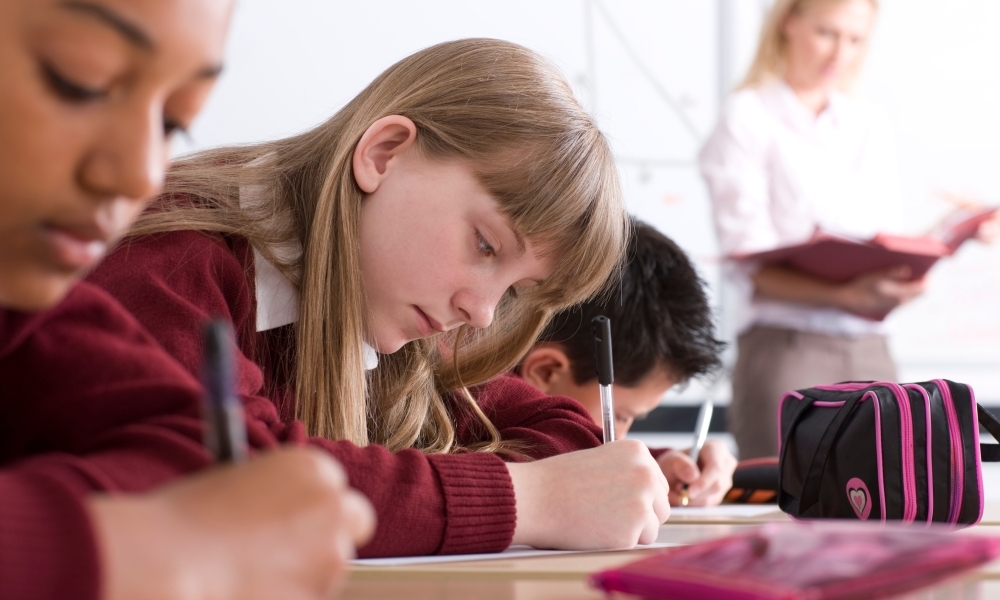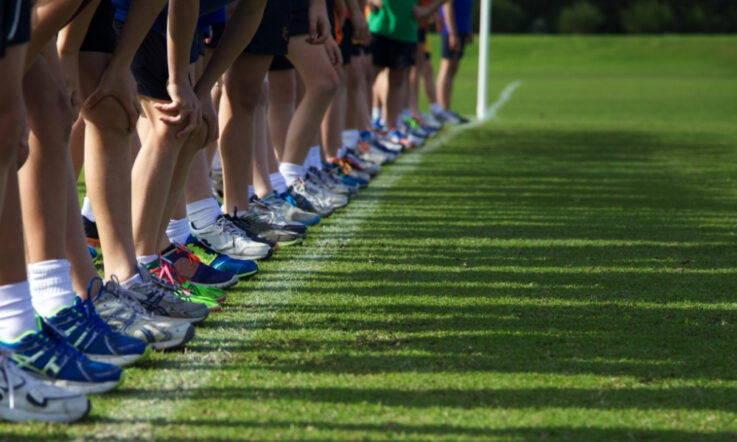All students have the right to a high quality education – regardless of their background, personal and socioeconomic circumstances, where they live, or the school they attend.
Reducing the disparities in the schooling experiences of students was one of the issues identified by Teacher columnist Professor Geoff Masters AO in his influential series on the ‘big five’ education challenges facing Australian schools.
In his 2015 article, he warned ‘the evidence from the OECD's Programme for International Student Assessment (PISA) is not only that Australian literacy and numeracy levels at 15 years of age have been on a steady decline since the year 2000, but also that disparities between Australian secondary schools have been increasing,’ adding that, in Australia, ‘evidence from a range of assessment programs reveals significant between-school disparities in student performance.’
Masters argued that an immediate national objective in Australia should be to reverse the trend of increasing disparities between schools as reflected in the PISA data. ‘A short-term objective should be to reduce between-school differences to levels that existed at the turn of the century. A long-term objective should be to make student outcomes still less dependent on which school they attend, the socioeconomic area in which they live, or school sector.’
Six years on, and in the midst of a global pandemic, what progress have we made? What does the latest evidence say about these differences, both between and within schools? And, where should we go from here?
Two of the authors of this article will be joined by Christine Cawsey, Principal of Western Sydney's Rooty Hill High School for a webinar on Tuesday, 9 March, exploring these issues. It’s the second in ACER’s Big Five Challenges in Education in a Changed World webinar series; we hope you can join us and be part of the conversation. Here’s a taste of what we’ll be discussing.
From 2000 to 2009 the disparities among Australian secondary schools widened so that the percentage of the variance in student PISA reading achievement increased from 18 per cent to 24 per cent, but from 2009 to 2018 the disparities among schools in PISA reading achievement became smaller (from 24 per cent to 18 per cent) (OECD, 2010; Schleicher, 2019). At the same time, total spread of student PISA reading scores widened. It is not clear why this more recent change has occurred, although it could be associated with increased school improvement initiatives and the increased secondary school size. It is also evident that disparities among schools are greater in mathematics than in reading.
It follows that a decline in the percentage of variance between schools in reading achievement would be accompanied by an increase in the percentage variance in reading achievement within schools: from 74 per cent to 81 per cent. In both 2009 and 2018 the within-school variability in Australia was above the OECD average by 10 percentage points. Currently, the variance in student performance between schools is less than third of the variance within schools. As Masters has elaborated: ‘The size and diversity of today’s student population mean that students come to school with very different backgrounds, starting points and learning needs.’ (Masters, 2020, p.5)
We are yet to see the impact of the disruption associated with the COVID pandemic on disparities among schools. It might be expected that this experience might be associated with wider disparities in achievement between schools (because of differences in resources to support remote learning) and in the variation within schools (because of differences in home support for remote learning).
Disparities among schools in student achievement arise through differences in the social composition of schools, and differences in student learning within schools. Countries that have smaller disparities among schools have less stratification in their school systems and more evenly distributed income.
A high within-school variability can be a product of teachers not having enough time to share their practice with each other, as we know that highly effective teachers can have a great impact on their students’ learning (Slater et al., 2012). High quality teaching have been seen to have the largest impact on those students that currently have lower achievement levels (ES = 0.47) (Slater et al., 2012). High quality teaching involves making evidence-informed decisions (Vaughan et al., 2017).
Some actions to ensure that between-school disparities do not grow again depend on actions by school systems, such as limiting the growth of differentiated secondary schools and providing support for continuous school improvement through the development of school leadership and professional learning for teachers.
Leaders that are focused on promoting and taking part with teachers in formal or informal professional learning can have a large impact on students’ learning (ES = 0.84) (Robinson et al., 2008). Effective professional learning needs to include both upfront training and follow-on coaching, so that it results in changes in teachers’ practice (Albers et al., 2017). This professional learning needs to be strongly tied to the overall vision of the school and clearly detailed within an implementation plan based on the current area of focus within the school (Sharples et al., 2019). It’s important that the professional learning is targeted to the uptake of more effective strategies in areas that we know make a difference to students – such as meta-cognition, feedback and within-class grouping/differentiation (Education Endowment Foundation, 2020).
Dr John Ainley and Dr Tanya Vaughan will be joined by Christine Cawsey, Principal of Western Sydney's Rooty Hill High School for the webinar – Reducing disparities between Australian schools: The Big Five Challenges in Education in a Changed World – on Tuesday, 9 March at 4pm (AEDT). Click on the link to register for this free event.
ACER’s Big Five Challenges in Education in a Changed World webinar series brings together expert practitioners, researchers and policymakers to revisit the ‘big five’ education challenges for Australian schools. Registration details for all upcoming events:
- Tuesday 9 Mar, 4pm (AEDT): Reducing disparities between Australian schools
- Wednesday 24 Mar, 4pm (AEDT): Reducing the ‘long tail’ of underachievement
- Wednesday 5 May, 4pm: Getting all children off to the best start in life
- Wednesday 19 May, 4pm: Raising the professional status of teaching
References
Albers, B., Pattuwage, L. & Vaughan, T. (2017). Summary of key findings of a scoping review of Implementation in Education. Evidence for Learning. http://www.evidenceforlearning.org.au/evidence-informed-educators/implementation-in-education
Education Endowment Foundation. (2020). Evidence for Learning Teaching & Learning Toolkit: Education Endowment Foundation. https://www.evidenceforlearning.org.au/the-toolkits/the-teaching-and-learning-toolkit/full-toolkit/
Masters, G. N. (2020). Nurturing Wonder and Igniting Passion, designs for a new school curriculum: NSW Curriculum Review. NSW Education Standards Authority. https://www.nswcurriculumreview.nesa.nsw.edu.au
OECD. (2010). PISA 2009 Results: Overcoming Social Background – Equity in Learning Opportunities and Outcomes (Volume II). OECD. http://dx.doi.org/10.1787/9789...
Robinson, V. M., Lloyd, C. A., & Rowe, K. J. (2008). The impact of leadership on student outcomes: An analysis of the differential effects of leadership types. Educational administration quarterly, 44(5), 635-674. https://doi.org/10.1177/0013161x08321509
Schleicher, A. (2019). PISA 2018: Insights and Interpretations. OECD. http://www.oecd.org/pisa/PISA%202018%20Insights%20and%20Interpretations%20FINAL%20PDF.pdf
Sharples, J., Albers, B., Fraser, S., Deeble, M., & Vaughan, T. (2019). Putting Evidence to Work: A school's Guide to Implementation. https://evidenceforlearning.org.au/guidance-reports/putting-evidence-to-work-a-schools-guide-to-implementation
Slater, H., Davies, N. M., & Burgess, S. (2012). Do teachers matter? Measuring the variation in teacher effectiveness in England. Oxford Bulletin of Economics and Statistics, 74(5), 629-645.
Vaughan, T., Deeble, M., & Bush, J. (2017). Evidence-informed decision making. Australian Educational Leader, 39(4), 32.



